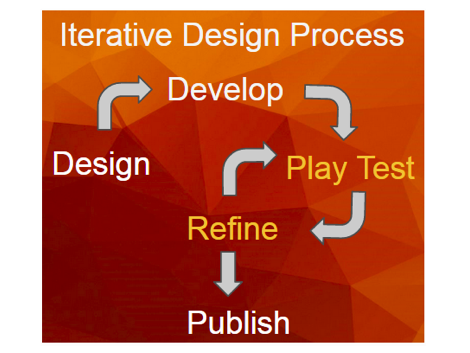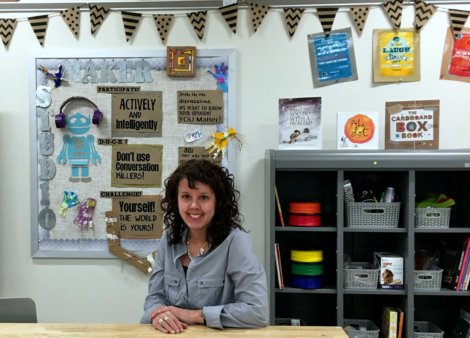
Concept Mapping and the Iterative Design Process
Posted by cemignano on
Earlier in July, we introduced you to Certified BrainPOP Educator of the month, Steve Isaacs. Read on to learn how Steve integrates the use of Make-a-Map into his video game design class.
I teach Video Game Design and Development. The basis behind game design is the Iterative Design Process. Interestingly, this skill applies to so many areas today and is a skill that all students need regardless of their academic and professional path. Iterative design applies to educators when creating lesson plans, engineers when building anything, writers when it comes to working through a writing piece, and on and on. In my class it relates to developing their games as they engage in the process from start to finish.
The above diagram is one I like to use to explain the iterative design process. Early in the course, I want students to gain an understanding of this process. I don’t show this graphic to students initially as I want them to construct the understanding on their own. This is where BrainPOP comes in.
I became very fond of the Make-a-Map tool as a vehicle for students to come to their own understanding by posing an essential question. This is especially interesting with Middle School students as they seem to be programmed to look for the answer rather than construct meaning. Without a guiding question, students approach mind mapping as a note taking tool. They will typically watch a video and take notes on it with the graphic organizer. I believe strongly that we need to move away from this approach and truly guide students toward understanding vs. facts. The task I pose my students with is the following:
For this quest, your focus will be on creating a mind map showing the process involved in making a video game. This will surely help us as we dissect the important aspects of the process. You will use the BrainPOP Make-a-Map tool to create your mind map.
Watch the Video Games BrainPOP video:
You will use the Make-a-Map link to create an interactive mind map including video clips, images, words, etc. as you highlight the game design process.
Focus on the question, “What is involved in the game design process?” You will need to think about the entire process from start to finish. In addition to the Video Games video, you should consult other resources including additional BrainPOP videos and the Related Reading section. This will help to provide more information about video games and game design to contribute to your mind map.
BrainPOP Resources:
Computer Programming
Video Games Related Reading
The activity itself often requires a degree of iteration. Students submit their map to me and I review it and respond with questions for the student. Often, despite the focus on the essential question, students still fall back to the idea of note taking based on the resources and miss the point of coming up with a true map of the design process. This allows for us to engage in the feedback loop (so important in education!) where I provide some guidance and reminders about the focus on the essential questions. Students go back to the map and make changes and resubmit it. We continue this iterative process. As I mentioned, this is no different from the English Teacher providing guidance in terms of writing, the Engineering Teacher providing guidance with regard to a design and build project, etc. Iterative Design is everywhere. And, if you couldn’t tell, iteration is by far my favorite word in the English Language.














